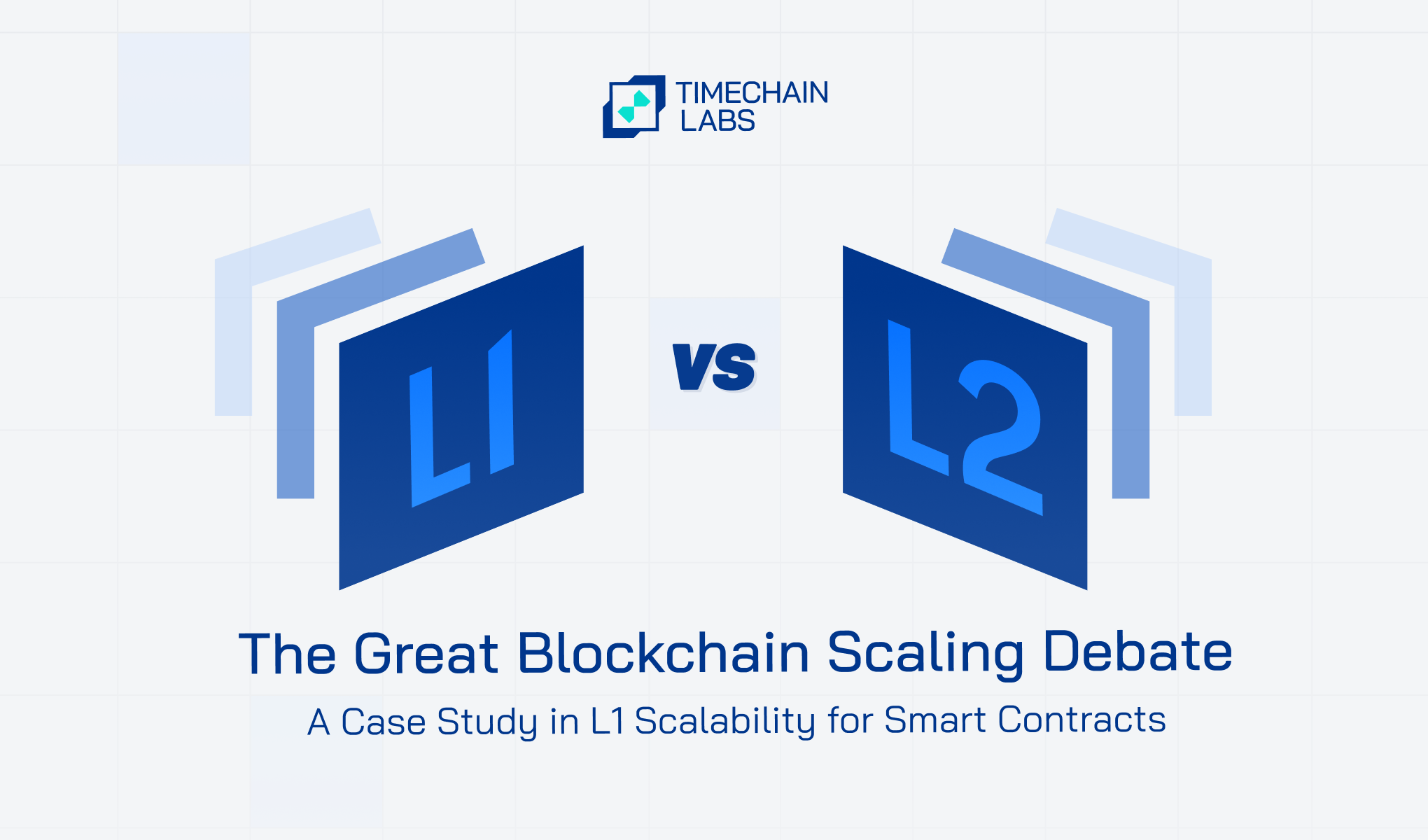The world of cryptocurrencies, spearheaded by Bitcoin, has witnessed tremendous growth and interest in recent years. However, this surge in demand exposed a significant bottleneck in the blockchain ecosystem - scalability. As of 2023, around 420million individuals worldwide have embraced cryptocurrency. The market has witnessed an impressive 320% surge in crypto user base between 2020 and 2022.
As the demand for cryptocurrencies, particularly Bitcoin, surged in 2017, the limitations of Layer 1, the fundamental layer of the blockchain, became apparent. It led to the emanation of Layer 2 to address the existing issues with its predecessor. In this blog, we will shed light on how Layer 2 came into the spotlight and the challenges encircling its scalability.
Understanding the Layer 1 and Its Scalability Issues
Layer 1 is the base network or the foundation of blockchain. It helps validate and facilitate transactions sans any external network. The Bitcoin network was the first-ever blockchain, whose demand surged substantially in 2017.
The main reason was a generous influx of people into the cryptocurrency segment. Thus, the transaction demand increased, leading to congestion, deferred transactions, and higher fees.
Bitcoin's Layer 1 operates on a 10-minute block time, with each block accommodating a limited number of transactions. The 1MB block size and an average transaction size of 300 bytes translated to nine transactions per second (tx/sec).
Ethereum, another major player, managed 14 tx/sec, but the artificial limit on block size proved to be a significant impediment to scalability.
How Did Layer 1's Inadequacies Made the Way for Layer 2?
As the blockchain space continues to evolve, the quest for scalability remains a focal point. Layer 1, with its foundational role, faced challenges that prompted the exploration of Layer 2 alternatives.
Platforms like Polygon on Ethereum and Solana introduced Layer 2 solutions, attempting to scale with smart contracts. However, challenges emerged, exemplified by Solana's 13 crashes in the previous year.
Challenges Associated with Layer 2 Scaling
Bitcoin is split into multiple chains with distinct scaling strategies. Bitcoin Core (BTC) continued on Layer 1, while the Lightning Network, a Layer 2 solution, aimed to address scalability issues through off-chain transactions.
As Layer 2 (L2) solutions lack settlement capabilities, any transaction requiring immediate settlement must be resolved on Layer 1 (L1). It necessitates L1 to possess adequate scalability for real-world use, even when effective L2 solutions are applicable for specific use cases.
To understand why L2 is not competent enough to be used as a standalone solution, let us explore its inefficiencies.
- Risk of Unblockchain Issues: Blockchain rollups are cryptocurrency scaling solutions under Layer 2. They consolidate or roll up a set of transactions on the L2 blockchain, converting them into a singular data set for broadcasting on an L1 blockchain. Rollups prove ineffective on an unscalable Layer 1 blockchain, as they inevitably reinstate blockchain issues such as centralization and intermediation. It can exacerbate challenges that are absent in conventional systems.
- Higher Transaction Fees: Compared to BTC and ETH, the Bitcoin Satoshi Vision (BSV) offers a more cost-effective solution. Presently, the average transaction fee on BSV stands at $0.0002 per transaction. It is significantly lower than the respective fees of $5.158 for BTC and $2.848 for ETH transactions.
- More Complex Infrastructure: One of the fundamental concerns about transitioning from L1 to L2 is the potential loss of simplicity. From a legal standpoint, this carries significant implications. Layer 2 introduces an entirely new network of contractual relationships with multiple layers of jurisdictional complexity. It dilutes the hassle-free nature of blockchain infrastructure, particularly when based in different jurisdictions, as is often the case.
- No Instant Transactions: Once a transaction is dispatched to Layer 1, it is rapidly reflected on the blockchain. On the other hand, Layer 2 introduces a different network topology, resembling a mesh network. In this structure, a transaction must traverse from hop to hop to reach its intended destination. Unlike the streamlined process of Layer 1, Layer 2 transactions involve multiple intermediary steps.
There is an increased number of hops that a transaction must navigate before it can be reflected on the blockchain. It brings delays and complexities in the transaction process, making Layer 2 less conducive to instant transactions.
How Does Bitcoin Satoshi Vision (BSV) Enables Convenient Scalability on Layer 1?
Bitcoin Satoshi Vision (BSV) embraced a different approach to scalability. By removing the artificial limit on block size and lifting non-standard transaction restrictions, BSV achieved unbounded scaling on Layer 1. This enabled smart contracts to thrive without the constraints faced by other blockchain solutions.
Why is L1 a Preferable Option?
The fundamental principles of decentralization are often more strongly upheld at Layer 1. In many blockchain networks, L1 involves a diverse set of nodes and miners, contributing to the overall security and resilience of the network.
Layer 1, with its native token Bitcoin, serves as a standardized commodity for transaction fees and ledger space. The free market dynamics for ledger production and consumption are well-established, promoting a transparent and efficient system.
Timechain Labs' unbounded L1 blockchain solution provides easy scalability. It lets you introduce and manage deposit tokens through a permissioned overlay network.
Book a demo to comprehend the power of L1 solutions for a future-proof blockchain.
References
https://coingeek.com/no-need-for-multi-layer-solutions-with-bitcoin/
https://coingeek.com/not-a-finished-product-ethereum-fees-and-scalability-issues-cripple-network/
https://coingeek.com/on-chain-scaling-vs-layer-2-scaling-what-are-the-differences/
https://coingeek.com/the-necessary-scalability-of-layer-1-on-blockchain/
https://coingeek.com/more-on-l2-solutions/
